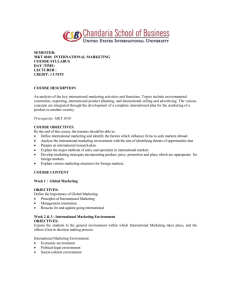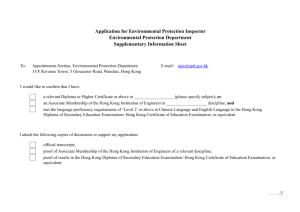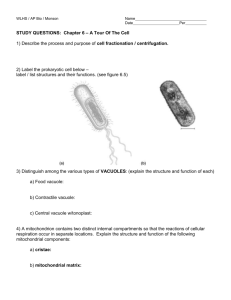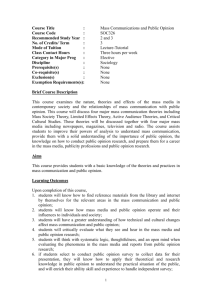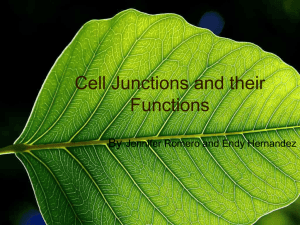Subject Description Form - Department of Electrical Engineering
advertisement
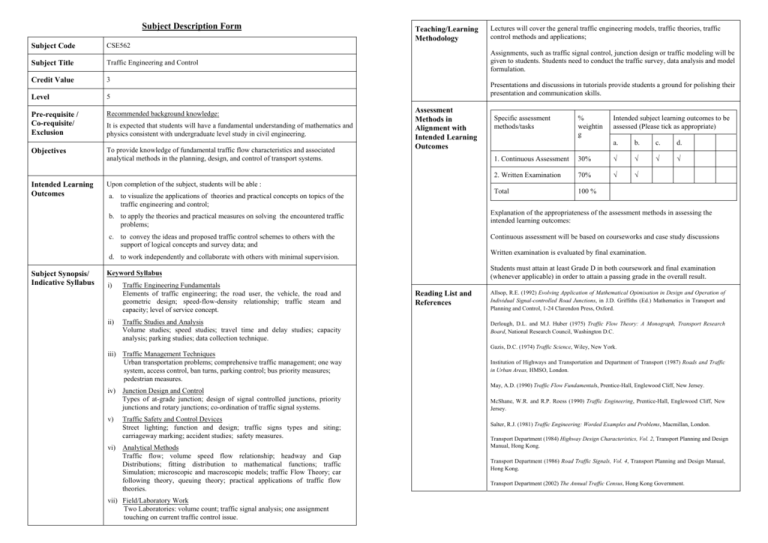
Subject Description Form Subject Code CSE562 Subject Title Traffic Engineering and Control Credit Value 3 Level 5 Pre-requisite / Co-requisite/ Exclusion Recommended background knowledge: Teaching/Learning Methodology Assignments, such as traffic signal control, junction design or traffic modeling will be given to students. Students need to conduct the traffic survey, data analysis and model formulation. Presentations and discussions in tutorials provide students a ground for polishing their presentation and communication skills. It is expected that students will have a fundamental understanding of mathematics and physics consistent with undergraduate level study in civil engineering. Objectives To provide knowledge of fundamental traffic flow characteristics and associated analytical methods in the planning, design, and control of transport systems. Intended Learning Outcomes Upon completion of the subject, students will be able : Assessment Methods in Alignment with Intended Learning Outcomes a. to visualize the applications of theories and practical concepts on topics of the traffic engineering and control; Traffic Studies and Analysis Volume studies; speed studies; travel time and delay studies; capacity analysis; parking studies; data collection technique. a. b. c. d. √ √ 1. Continuous Assessment 30% √ √ 2. Written Examination 70% √ √ Total 100 % Students must attain at least Grade D in both coursework and final examination (whenever applicable) in order to attain a passing grade in the overall result. Keyword Syllabus ii) Intended subject learning outcomes to be assessed (Please tick as appropriate) Written examination is evaluated by final examination. d. to work independently and collaborate with others with minimal supervision. Traffic Engineering Fundamentals Elements of traffic engineering; the road user, the vehicle, the road and geometric design; speed-flow-density relationship; traffic steam and capacity; level of service concept. % weightin g Continuous assessment will be based on courseworks and case study discussions c. to convey the ideas and proposed traffic control schemes to others with the support of logical concepts and survey data; and i) Specific assessment methods/tasks Explanation of the appropriateness of the assessment methods in assessing the intended learning outcomes: b. to apply the theories and practical measures on solving the encountered traffic problems; Subject Synopsis/ Indicative Syllabus Lectures will cover the general traffic engineering models, traffic theories, traffic control methods and applications; Reading List and References Allsop, R.E. (1992) Evolving Application of Mathematical Opimisation in Design and Operation of Individual Signal-controlled Road Junctions, in J.D. Griffiths (Ed.) Mathematics in Transport and Planning and Control, 1-24 Clarendon Press, Oxford. Derlough, D.L. and M.J. Huber (1975) Traffic Flow Theory: A Monograph, Transport Research Board, National Research Council, Washington D.C. Gazis, D.C. (1974) Traffic Science, Wiley, New York. iii) Traffic Management Techniques Urban transportation problems; comprehensive traffic management; one way system, access control, ban turns, parking control; bus priority measures; pedestrian measures. iv) Junction Design and Control Types of at-grade junction; design of signal controlled junctions, priority junctions and rotary junctions; co-ordination of traffic signal systems. v) Traffic Safety and Control Devices Street lighting; function and design; traffic signs types and siting; carriageway marking; accident studies; safety measures. vi) Analytical Methods Traffic flow; volume speed flow relationship; headway and Gap Distributions; fitting distribution to mathematical functions; traffic Simulation; microscopic and macroscopic models; traffic Flow Theory; car following theory, queuing theory; practical applications of traffic flow theories. vii) Field/Laboratory Work Two Laboratories: volume count; traffic signal analysis; one assignment touching on current traffic control issue. Institution of Highways and Transportation and Department of Transport (1987) Roads and Traffic in Urban Areas, HMSO, London. May, A.D. (1990) Traffic Flow Fundamentals, Prentice-Hall, Englewood Cliff, New Jersey. McShane, W.R. and R.P. Roess (1990) Traffic Engineering, Prentice-Hall, Englewood Cliff, New Jersey. Salter, R.J. (1981) Traffic Engineering: Worded Examples and Problems, Macmillan, London. Transport Department (1984) Highway Design Characteristics, Vol. 2, Transport Planning and Design Manual, Hong Kong. Transport Department (1986) Road Traffic Signals, Vol. 4, Transport Planning and Design Manual, Hong Kong. Transport Department (2002) The Annual Traffic Census, Hong Kong Government.

